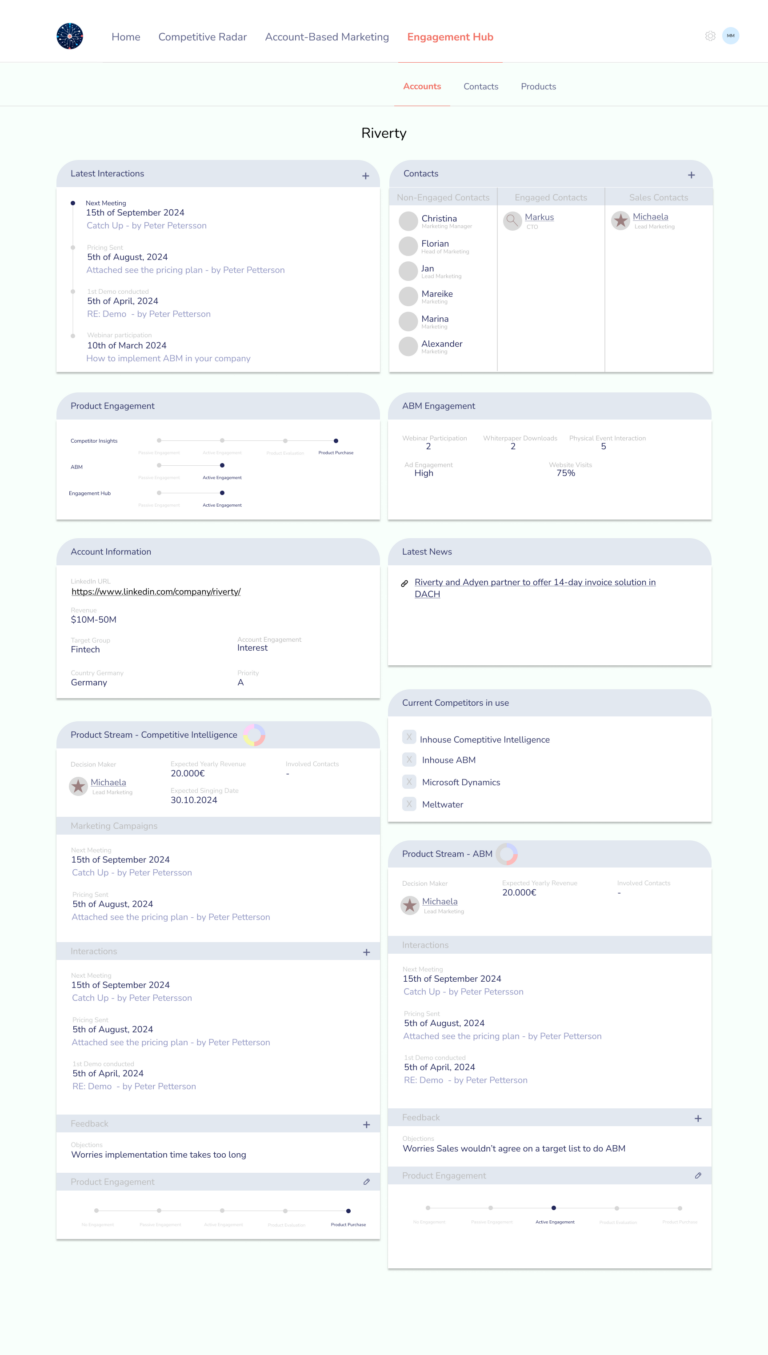In this article, I compare InsightSync and Linklo on features, pricing, reviews and best fit, so you can decide which one supports your ABM strategy.
I also show how ZenABM can act as a lean and affordable LinkedIn first ABM platform or sit alongside these tools as a complementary layer due to its unique features.

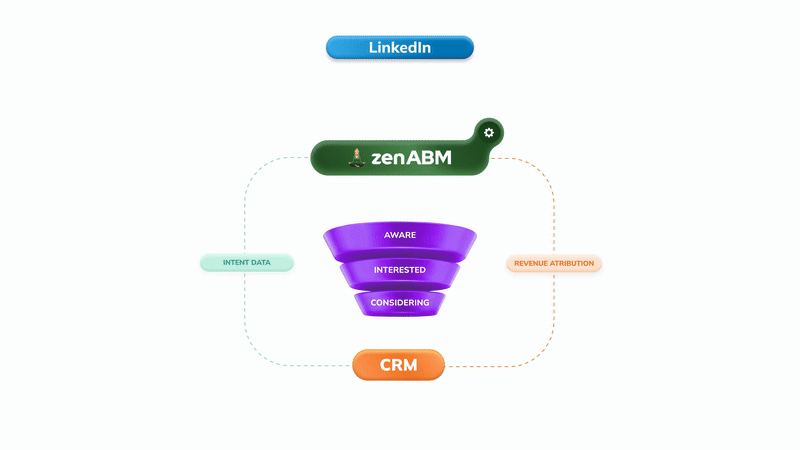
InsightSync vs. Linklo: Quick Summary
In case you’re short on time, here is the short version:
- InsightSync is a CI plus ABM analytics backbone that unifies target accounts, engagement and competitor intel for GTM alignment.
- Best when the main issue is getting marketing and sales to agree on which accounts to focus on and why.
- Linklo is a LinkedIn Ads layer that adds scheduling, dayparting and Company Flow to control reach and sequences by account.
- Best when you want to stretch LinkedIn ad budgets, control delivery by time and account, and keep tooling light.
- InsightSync is broader and pricier. Linklo is cheaper but limited to LinkedIn ad delivery and pacing.
- A third option: ZenABM offers account-level LinkedIn engagement, plug-and-play engagement to pipeline dashboards, account scoring, ABM stages, CRM sync, first-party qualitative intent, automated BDR assignment, custom webhooks, an AI chatbot and job title level analytics starting at $59 per month.
InsightSync Overview: Key Features, Pricing and Reviews
InsightSync is a newer account-based marketing and competitive intelligence platform that puts target accounts, engagement data, and competitor research into one shared system.
The pitch is simple: tighter alignment across GTM teams without adding yet another media platform.
Key Features of InsightSync
InsightSync bundles three modules in one ABM platform.
1. Competitive Intelligence Hub
This is InsightSync’s main differentiator versus ABM-only tools.
The Competitive Intelligence Hub tracks competitors and market moves in one place.
Unified News Feed

InsightSync pulls competitor content from news sites, press releases, and internal or external blog posts into a single feed, so you stop juggling multiple alerts.
You can tag items by competitor or topic, react to important updates, share them with colleagues, and set alerts for specific tags or keywords, for example, when a rival announces an acquisition.
Competitor Radar & Profiling

The CI Hub lets you maintain structured profiles for each competitor, including customer logos, partners, alliances, pricing notes, and positioning, so the whole team uses the same picture.
AI Document Search
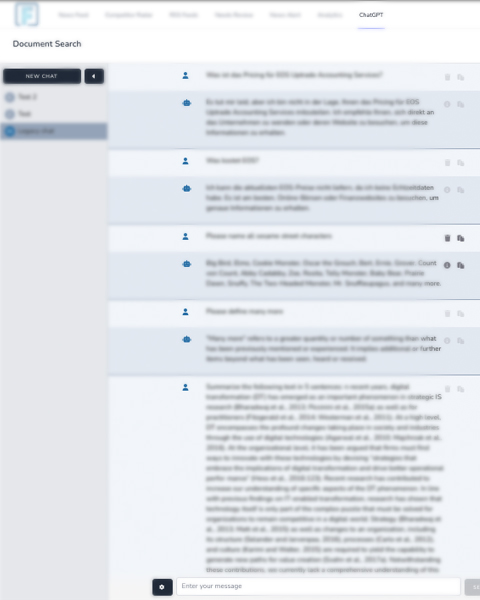
InsightSync ingests PDFs, whitepapers, and internal decks and lets you query them with AI search or pull concise summaries and key points.
2. Account-Based Marketing Hub in InsightSync
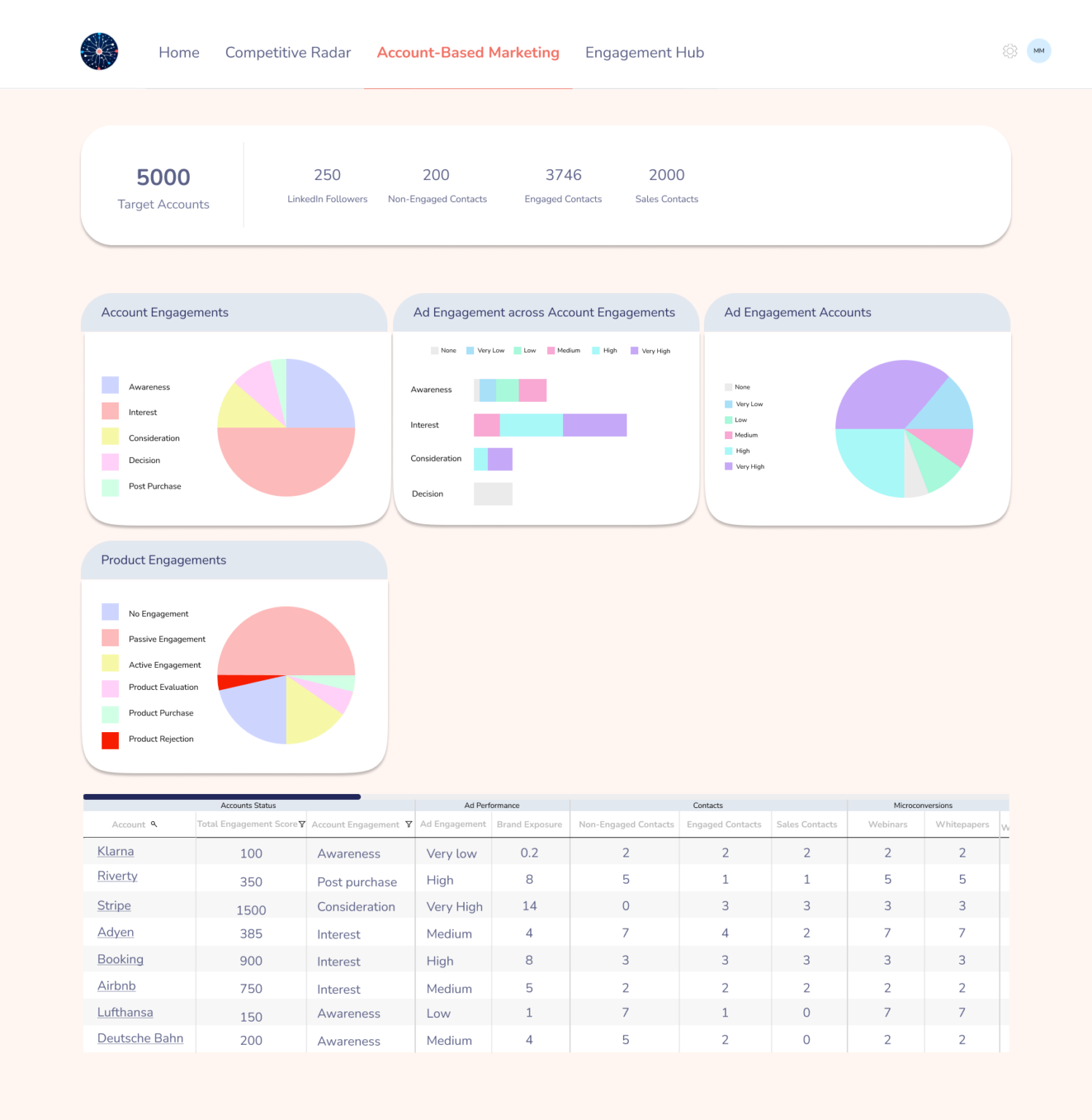
The ABM Hub focuses on three questions:
- Who are we targeting?
- What do we know about them?
- How are we engaging them right now?
It is the home for your account-based marketing workflows.
Target Account List Management
You can import or build your target account list from your CRM or CSV files.
Each account becomes a record that you enrich over time with firmographics such as industry, size, and tech stack from other tools or manual input.
Multi-channel Engagement Tracking
Once your TAL is in place, InsightSync tracks engagement from ads, email, and meetings in one timeline.
You can score actions, so demo requests carry more weight than casual newsletter opens, and high-scoring accounts surface as more sales-ready.
Real-Time Alerts & Optimization
InsightSync flags accounts that heat up or cool down so teams can double down where momentum is growing and step in when important accounts go quiet.
Account-level visibility also supports budget shifts toward active accounts and messaging tweaks for segments that lag.
Scalability & Workflow Automation
InsightSync is positioned to grow with your ABM maturity. It references automated workflows for personalized outreach, although public details are still limited.
Important context: InsightSync’s ABM Hub is channel agnostic and analytics-focused. It is not an ad network or full marketing automation platform like Demandbase or RollWorks. You still run campaigns in LinkedIn, HubSpot, and other tools while InsightSync ingests data for attribution and analysis.
For LinkedIn-heavy teams, ZenABM offers a more direct path via the official LinkedIn Ads API.
It pulls company-level impressions, clicks, engagement, and spend, scores accounts, syncs this data into the CRM as company properties, and routes hot accounts to BDRs automatically.




ZenABM then connects ad-engaged accounts with CRM deals and provides revenue and attribution dashboards so you can measure LinkedIn ABM impact on pipeline and closed revenue.

3. Engagement Hub
InsightSync’s Engagement Hub consolidates account activity such as web visits, ad clicks, email opens, and event attendance across contacts.
It highlights trends like rising interest or sudden silence so teams can focus on active accounts and re-engage those going quiet.
At the contact level, you can see who viewed pricing, who registered but skipped webinars, and who stays engaged, which helps sales tune outreach and marketers refine content.

These patterns help you map buyer roles and intent, infer funnel stage, and trigger timely follow-ups.
The Engagement Hub does not execute campaigns. Its job is to keep marketing and sales aligned around a shared view of account engagement and behavior.
InsightSync Pricing: How Much Does It Cost?
InsightSync sits in the premium bracket and targets teams that want a combined ABM plus CI backbone.
Here is the pricing as of late 2025:

- Self Service – €699/month: All three hubs with unlimited users. You handle setup and connect data manually or via the HubSpot integration, currently the only native CRM. Includes a 30-day free trial.
- Pro – €899/month (+ €3,500 one-time setup fee): Adds white glove onboarding. InsightSync’s team connects data, configures alerts and dashboards, and runs a one-off competitor and partner research project, plus quarterly reviews. The monthly step up from Self Service is modest, but the one-time service fee is sizeable.
- Custom – Contact for pricing: For teams on Salesforce, Microsoft Dynamics, Zoho, or Pipedrive. InsightSync is still building these integrations and offers early access. Custom plans add bespoke CRM work, technical consulting, prioritized features, and priority support.
InsightSync is cheaper than the biggest ABM suites, but still an upper mid-market spend. It works when you treat it as a CI system, ABM analytics layer, and light CRM adjunct in one.
Earlier stage or lean teams may still find the roughly €8K per year starting point heavy.
By contrast, ZenABM starts at about $59 per month for its starter plan, a small fraction of that.
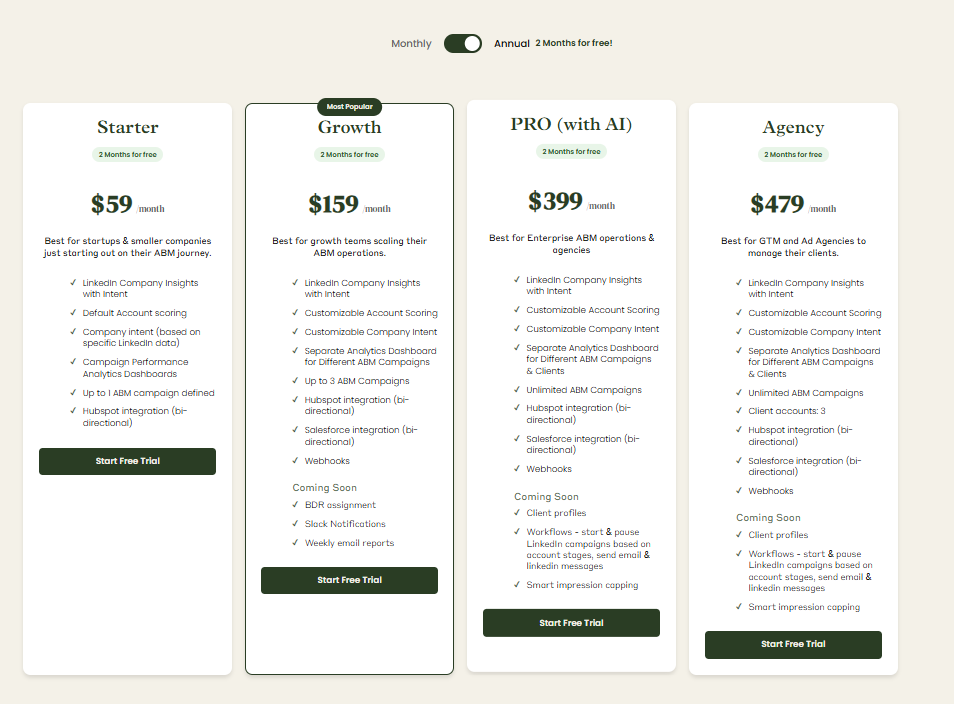
User Impressions and Reviews
Public feedback on InsightSync is still limited, but a few patterns show up:
- Origin story – built by practitioners: InsightSync began as an internal tool from a B2B marketing lead at Riverty before spinning out. ZenABM has a similar origin: Michael Jackowski built it for Emilia Korczynska at Userpilot to fix LinkedIn ABM reporting, then turned it into a dedicated LinkedIn ABM SaaS. Customers like Productive and Spear Growth report strong results with ZenABM.

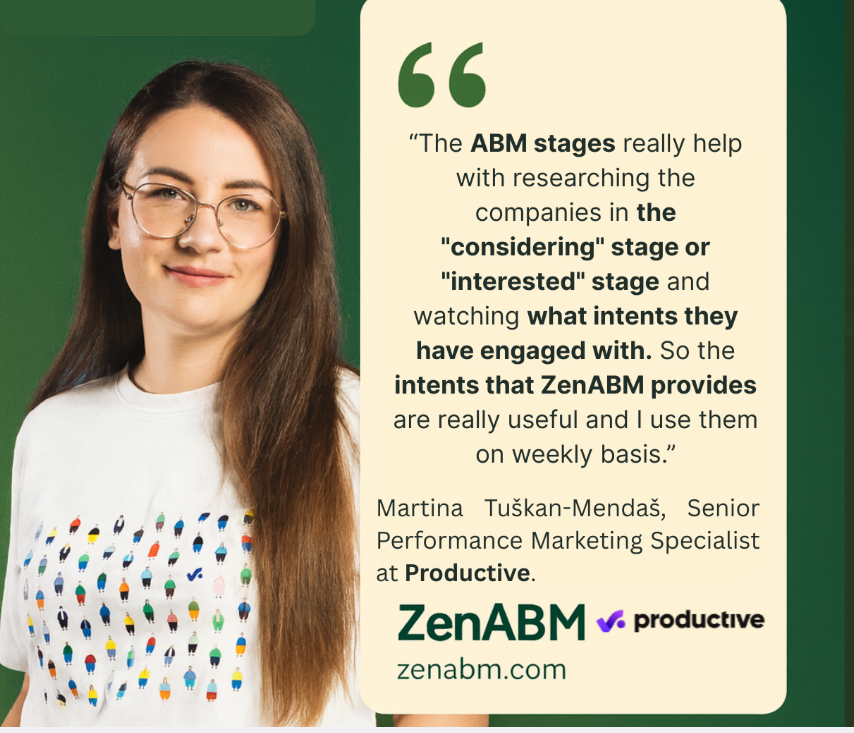
- Website testimonial: A testimonial from “John Doe, Riverty” says InsightSync has aligned marketing and sales and that the CI Hub alone saves hours each week.
- No G2 or TrustRadius footprint yet: As of November 2025, InsightSync does not have listings or reviews on G2 or TrustRadius.
Linklo Overview: Key Features, Pricing, and Reviews
Linklo bills itself as a LinkedIn Ads optimization platform built for account-based marketing-like precision.
It lets you schedule LinkedIn ads, balance ad reach across target accounts, integrate “intent” timing, and generally squeeze more efficiency from LinkedIn’s notoriously expensive ad channel.
Let’s take a deeper look at its key features and also discuss its pricing and reviews.
Key Features of Linklo
Linklo is laser-focused on LinkedIn Ads.
In fact, that’s the only advertising channel it manages.
The platform is essentially a power-user layer on top of LinkedIn Campaign Manager, addressing features LinkedIn itself lacks.
Its core offerings:
Ad Scheduling & Dayparting
Perhaps Linklo’s flagship capability is automated scheduling of LinkedIn ads.
LinkedIn’s own ad platform infamously does not let you daypart or automatically pause campaigns on a schedule.
Linklo fills this gap by letting you set precise times for campaigns to run (e.g. only weekdays 8 am-8 pm).
The idea is to focus budget “where buyers actually engage” – e.g. during business hours, instead of frittering away spend at 2 am.
Company Flow™ for ABM Sequences
Linklo provides proprietary Company Flow™ feature to “balance reach/frequency and orchestrate ABM-style sequences” across your LinkedIn campaigns.
In plainer terms, this means Linklo tries to ensure your target accounts each see your ads in a balanced way.
Instead of LinkedIn’s algorithm dumping impressions into only a handful of accounts, Linklo’s Company Flow feature evens out the delivery so one company doesn’t gobble most of your impressions.
Company Flow also implies the ability to sequence ads, meaning you could show Ad A to an account first, then Ad B later as a follow-up.
However, let’s be clear: this is within LinkedIn only.
Linklo isn’t coordinating email touches or Sales Navigator InMails or any off-LinkedIn channels in those sequences.
It’s not a full orchestration platform like, say, Terminus (which coordinates ads, email, web personalization, etc.).
Data and Intent Features
Linklo doesn’t provide any third-party intent data from sources like Bombora, etc.
It assumes you already know your target account list and focuses on delivering ads to them efficiently.
The closest thing to “intent” in Linklo’s toolkit is its use of engagement timing data.
By analyzing when your audience tends to engage on LinkedIn, Linklo can schedule ads during those intent-rich windows (e.g. if decision-makers engage more on Tuesday mornings, it will concentrate spend there).
This is useful, but it’s a far cry from the qualitative intent data that ABM platforms offer.
Pro Tip: Linklo provides no kind of intent data. Other ABM suites like 6sense, RollWorks, etc., provide intent data, but I don’t even prefer that. Third-party intent looks exciting until you realize it’s stitched together from mystery browsing data and hope. It tells you what a single contact might be googling, not what an entire buying committee actually cares about. ZenABM skips the guesswork by giving you first-party company-level intent straight from your own LinkedIn ads. You see which accounts engaged with which themes, which feature groups they reacted to, and how their interest changes over time.

Userpilot, using ZenABM, built their whole ABM campaign structure around this first-party company-buyer’s intent obtained from LinkedIn ads instead of third-party tools:
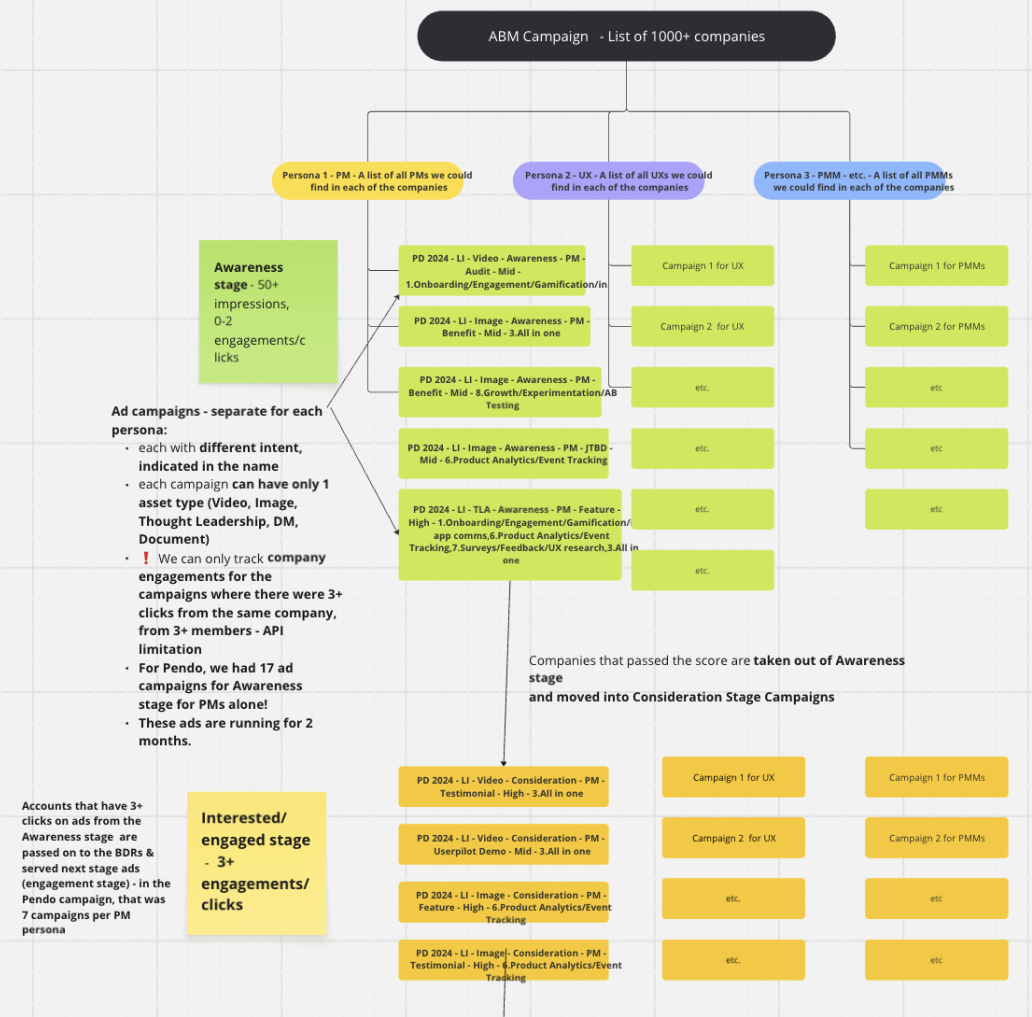
CRM and Marketing Automation Integrations
Linklo, being a lean LinkedIn-focused tool, currently has no native CRM or marketing automation integration.
The platform seems to operate mostly within its own dashboard on top of LinkedIn.
You use Linklo to adjust campaigns, and of course, your leads still flow into LinkedIn’s native lead gen forms or your CRM via LinkedIn’s connectors, but Linklo isn’t pushing account-level insights into your CRM.
ZenABM, on the contrary, does provide bi-directional CRM sync:
- It pushes LinkedIn ad engagement metrics as company properties to your CRM:
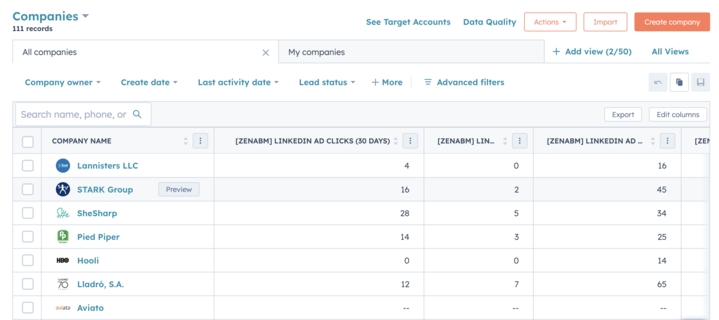
LinkedIn ad data pushed to company lists in the HubSpot CRM using ZenABM - It matches ad-engaged companies to the deals in your CRM for LinkedIn ads ROI attribution.
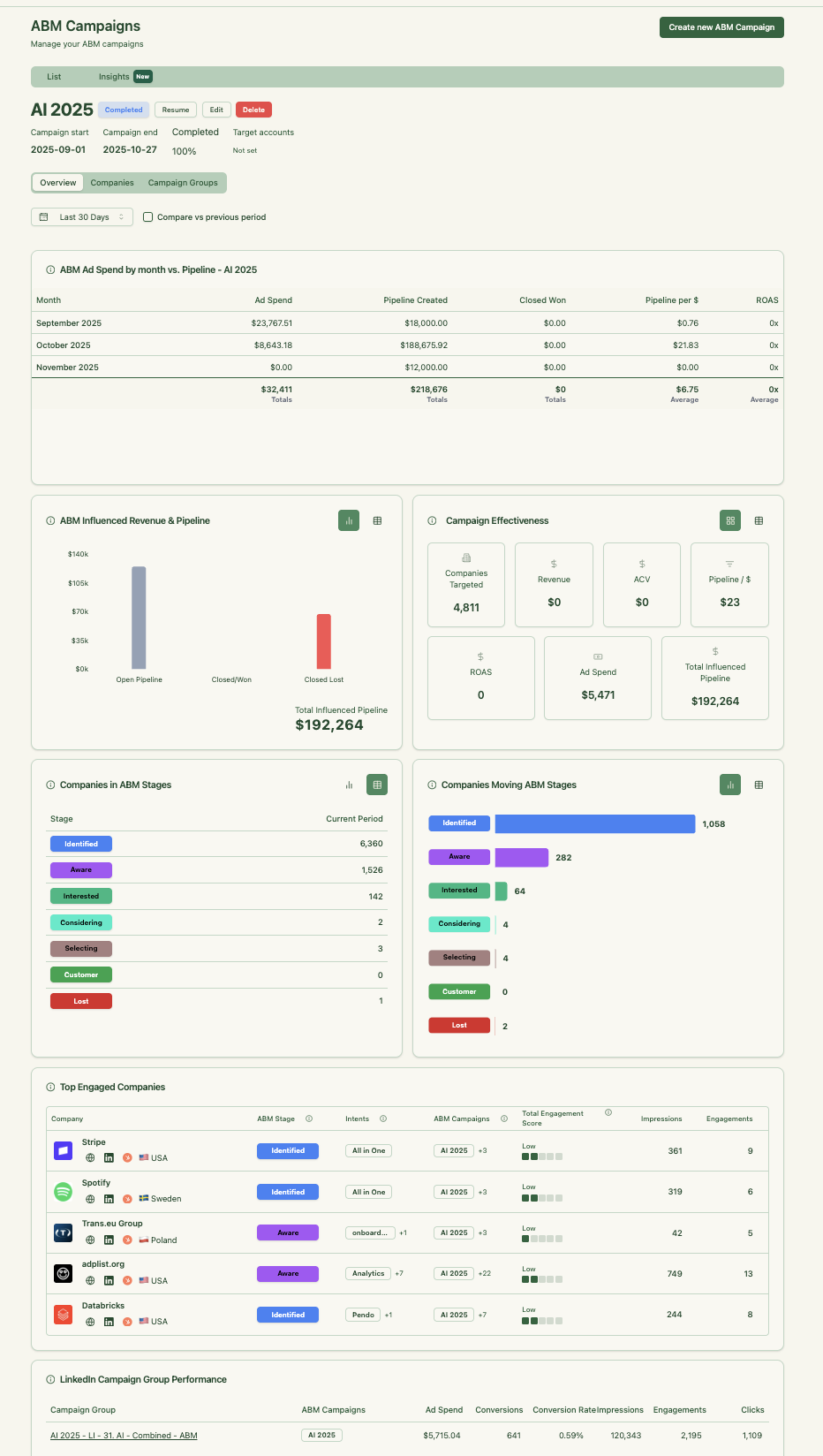
ZenABM Campaign analytics 
ZenABM dashboard showing company-level ad engagement data per campaign by pulling first-party intent signals from the LinkedIn API
Personalization Capabilities
Personalization in ABM usually means tailoring messaging or creatives to each account or segment.
Linklo itself doesn’t create personalized ad content for you.
You still have to design the ads.
However, by orchestrating sequences and controlling frequency per account (via Company Flow), Linklo enables a form of personalization: you could line up different ads for different stages or industries and use Linklo to ensure each account sees the right sequence.
Linklo Pricing: How Much Does It Cost?
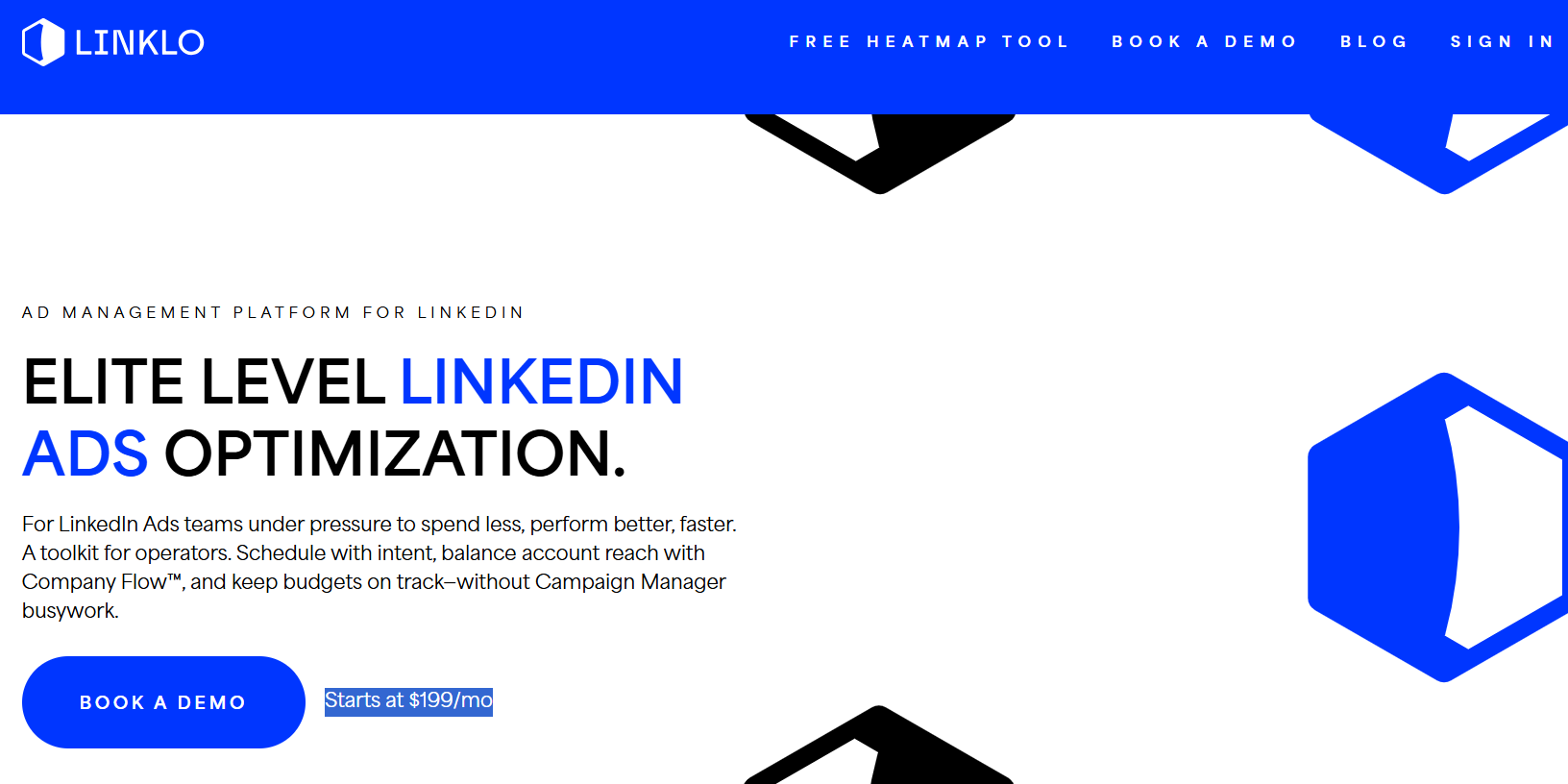
Linklo publicly advertises that it “Starts at $199/mo.”
Nothing more.
Nothing less.
Not much is available on review sites either.
That suggests a flat monthly subscription (likely for a base package), which is refreshingly transparent compared to enterprise ABM platforms that require demos just to get a quote.
At $199 a month, Linklo is positioned as a relatively affordable tool – certainly modest next to the multi-thousand-dollar contracts of full-scale ABM suites.
What do you get for $199/mo?
The details aren’t fully spelt out on the website, but presumably the base plan includes core features (scheduling, budget management, A/B testing) for one LinkedIn Ads account or a limited number of users.
It’s possible that higher spending or multiple ad accounts could require higher tiers – e.g. agencies managing many accounts might pay more, but we haven’t seen a published tier breakdown.
The “starts at” phrasing implies there are higher levels, perhaps based on ad spend or team size.
One potential concern is feature bloat relative to cost.
Linklo packs in multiple capabilities (some might say it’s bloated for just managing LinkedIn): it’s combining functions of a bid rule engine, an ad scheduler, a budget pacing tool, and a lightweight analytics tool. If your team only needs one of those features (say, just dayparting), $199 might feel steep.
Conversely, if you’ll actively use all those features, then $199 is a great value.
Linklo’s pricing, being subscription-based, also means you can cancel if it’s not delivering value.
This is important because some ABM investments are hard to back out of (annual contracts, long implementation).
Again, if you are looking for a LinkedIn ABM tool with clearer pricing, I present ZenABM, starting at just $59/month.
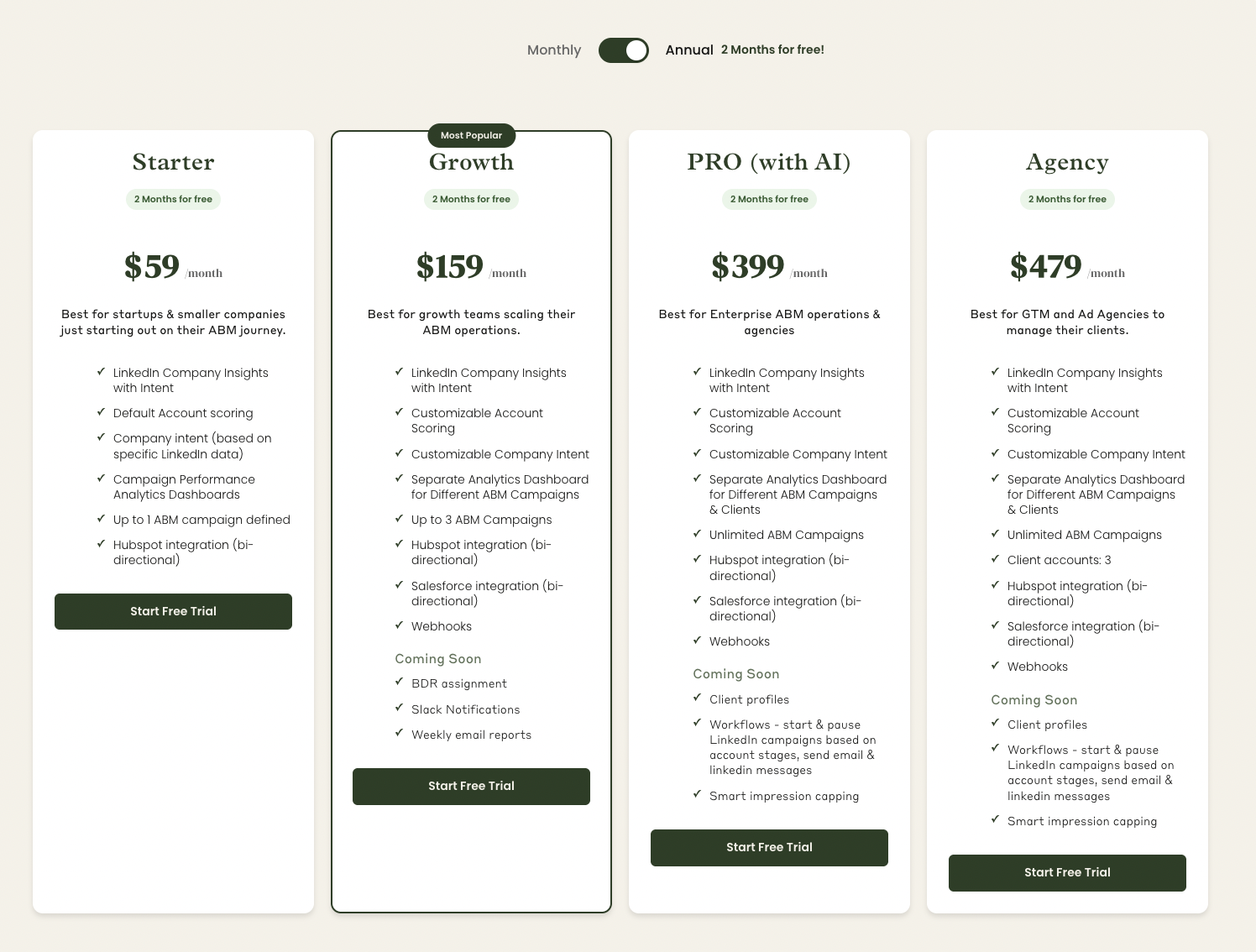
ZenABM offers account-level LinkedIn ad engagement tracking, ad engagement-to-pipeline analytics with plug-and-play dashboards, account scoring, ABM stage tracking, CRM sync, first-party qualitative intent, automated assignment of BDRs to hot accounts, custom webhooks, and ad engagement tracking at the job-title level.

User Impressions and Reviews
For a grounded view, what are actual users (or tire-kickers) saying about Linklo?
The truth is that public user sentiment is sparse.
Linklo launched in 2023 and hasn’t amassed many reviews on major platforms yet.
On G2, for example, Linklo is listed in the Social Media Advertising category but currently sits at 0 reviews.
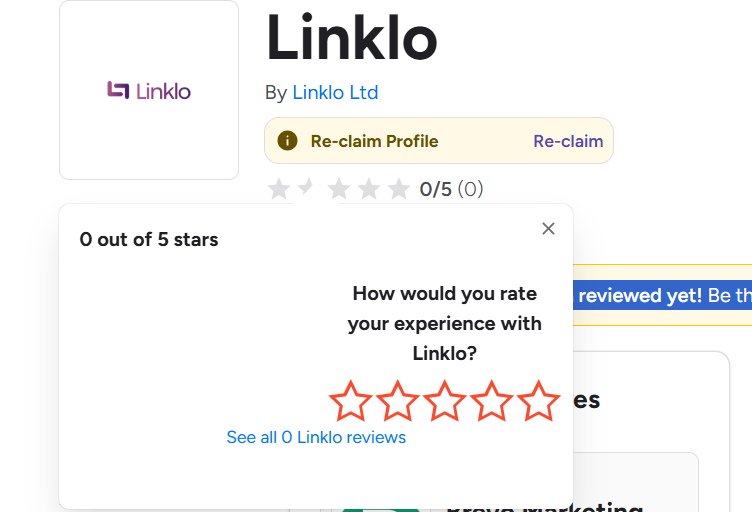
TrustRadius and other review sites similarly have no substantial data on Linklo (a TrustRadius search turned up empty as of late 2025).
On social media and forums, the chatter I did find was a mix of curiosity and cautious optimism.
On Reddit, Linklo’s name has popped up in discussions among pay-per-click and LinkedIn Ads practitioners.
In one thread about scheduling LinkedIn ads (a question born out of frustration with LinkedIn’s limitations), a user mentioned Linklo as a known solution, though they admitted they hadn’t used it yet.

InsightSync vs. Linklo: Key Differences
Here is a direct comparison of InsightSync and Linklo across core dimensions.
| Feature category | InsightSync | Linklo |
|---|---|---|
| Core positioning | Competitive intelligence plus ABM analytics platform that centralizes target accounts, engagement and CI data | LinkedIn Ads optimization and orchestration tool that adds controls on top of Campaign Manager |
| Primary focus | Giving GTM teams a shared view of who to target, how they engage and what competitors are doing | Improving efficiency of LinkedIn ad delivery through scheduling, pacing and account-level reach management |
| Main modules or features | Competitive Intelligence Hub, ABM Hub, Engagement Hub for accounts and competitors | Ad scheduling and dayparting, Company Flow for reach and sequences, budget and delivery controls |
| Audience and ABM model | Account-based model focused on target account lists, firmographic enrichment and account plus contact timelines | Account-oriented delivery on LinkedIn, but centered on campaign reach and sequences rather than full ABM journeys |
| Channels covered | Channel agnostic analytics that ingest data from LinkedIn, email, meetings, web and other tools | LinkedIn Ads only, operates as a power user layer on top of Campaign Manager |
| Data and intent signals | First-party engagement data from your tools surfaced at account level, plus competitor content and profiles | No native intent data, uses engagement timing and delivery patterns to target when audiences are most active |
| CRM and MAP integrations | Native HubSpot integration and custom work for Salesforce and other CRMs on higher tiers | No native CRM or MAP integrations, relies on LinkedIn forms and existing connectors for lead capture |
| Execution capabilities | Does not buy media, focuses on analytics, scoring, alerts and CI to guide ABM execution in other tools | Actively controls LinkedIn ad delivery via schedules and account-level rules, but does not add broader analytics or CI |
| Pricing profile | Premium euro-priced platform starting around €699 per month, plus setup for some tiers | Subscription pricing starting at about $199 per month for LinkedIn ad scheduling and optimization |
| Ideal team profile | B2B teams that already run campaigns in LinkedIn and MAPs and want a single CI plus ABM analytics backbone | Teams that spend meaningfully on LinkedIn Ads and want more control without adopting a full ABM suite |
| Best use case | Aligning marketing and sales on which accounts to pursue, when to act and with what competitive context | Stretching LinkedIn budgets further, reducing wasted impressions and orchestrating simple ABM-style ad sequences |
| Where ZenABM fits | Acts as a LinkedIn first companion when you want company-level ad engagement and first-party intent synced into the CRM | Provides a lean alternative when you want LinkedIn ABM, CRM sync and revenue attribution rather than only scheduling and pacing |
InsightSync vs. Linklo: So, Which Is Better for ABM?
InsightSync is a better fit if you want a shared ABM and CI backbone for marketing and sales.
It centralizes target account lists, engagement timelines and competitor moves so teams can work from the same account-centric view while still running campaigns in LinkedIn, HubSpot and other tools.
If your biggest headache is alignment and you want to treat CI plus ABM analytics as one system, InsightSync is the stronger candidate.
Linklo is a better fit if your core problem is wrangling LinkedIn Ads rather than building a full ABM and CI stack.
It adds the missing controls that Campaign Manager does not offer, such as ad scheduling and Company Flow to balance reach and sequences across accounts.
If you mainly care about improving LinkedIn efficiency on a modest budget and are comfortable keeping analytics and CRM work elsewhere, Linklo is the more practical choice.
ZenABM as a LinkedIn-First, First-Party Lean ABM Alternative
There is also a third option: ZenABM.
ZenABM is built for teams that rely on LinkedIn as the primary ABM channel and want first-party accuracy, automation, and revenue visibility without the price or complexity of multi-channel suites.
Account-Level LinkedIn Engagement Tracking


ZenABM connects to the official LinkedIn Ads API and captures account-level data for all campaigns so you can see which companies see, click, and engage with your ads.
Because this is first-party data from LinkedIn’s environment, it is more reliable than IP or cookie-based visitor ID.
A Syft study puts IP-based identification at around 42 per cent accuracy.

ZenABM treats LinkedIn ad engagement itself as first-party intent. When several people in one company keep engaging with your ads, that is a strong buying signal without rented intent feeds.
Real-Time Engagement Scoring + Full Touchpoint Timeline

ZenABM updates engagement scores as accounts interact with your ads across campaigns, so you can see who is heating up over short or long windows and let marketing and sales prioritize accounts that show real intent.
ZenABM also shows the full touchpoint timeline for each company:

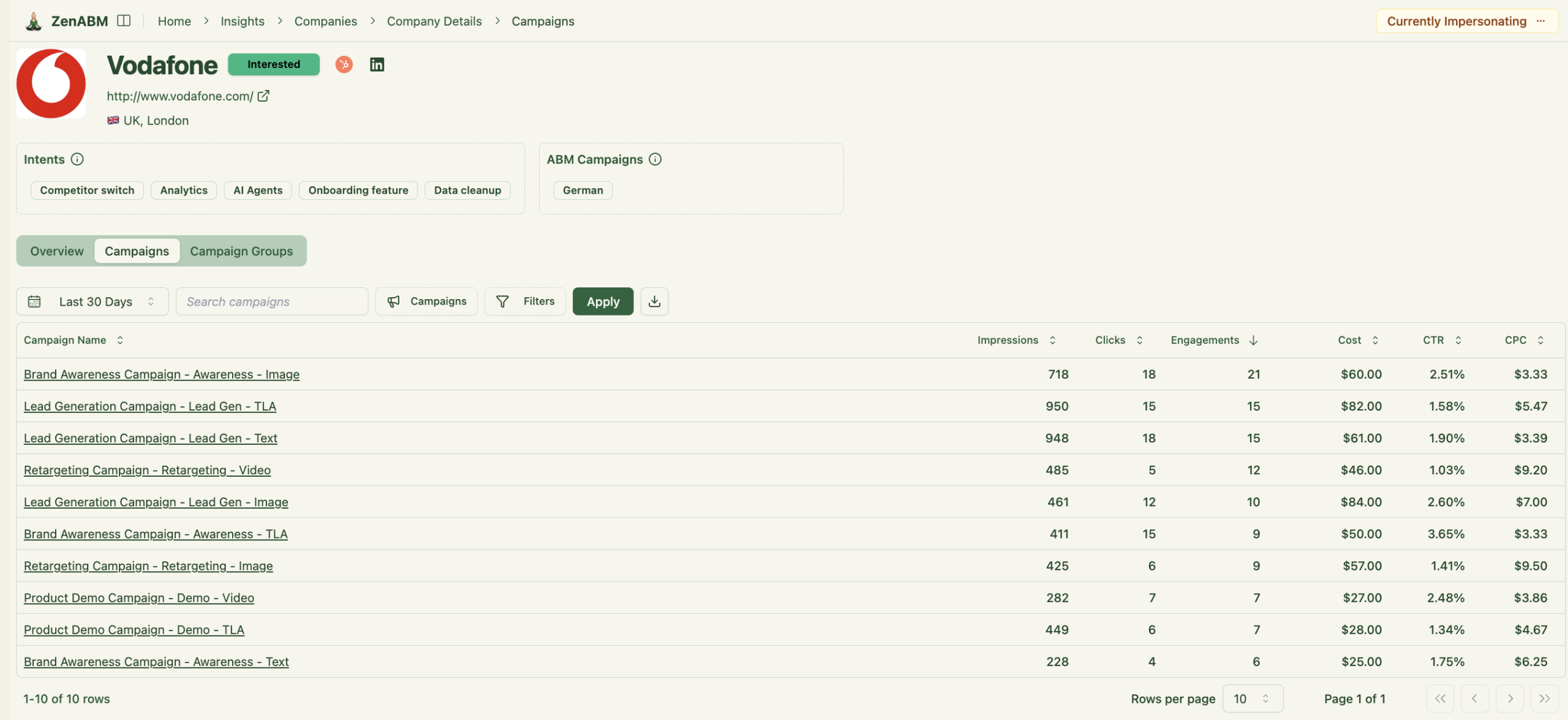
ABM Stage Tracking

ZenABM lets you define stages such as Identified, Aware, Engaged, Interested, and Opportunity and automatically places accounts in the right stage using scores and CRM data.
You control thresholds, and ZenABM tracks movement over time.
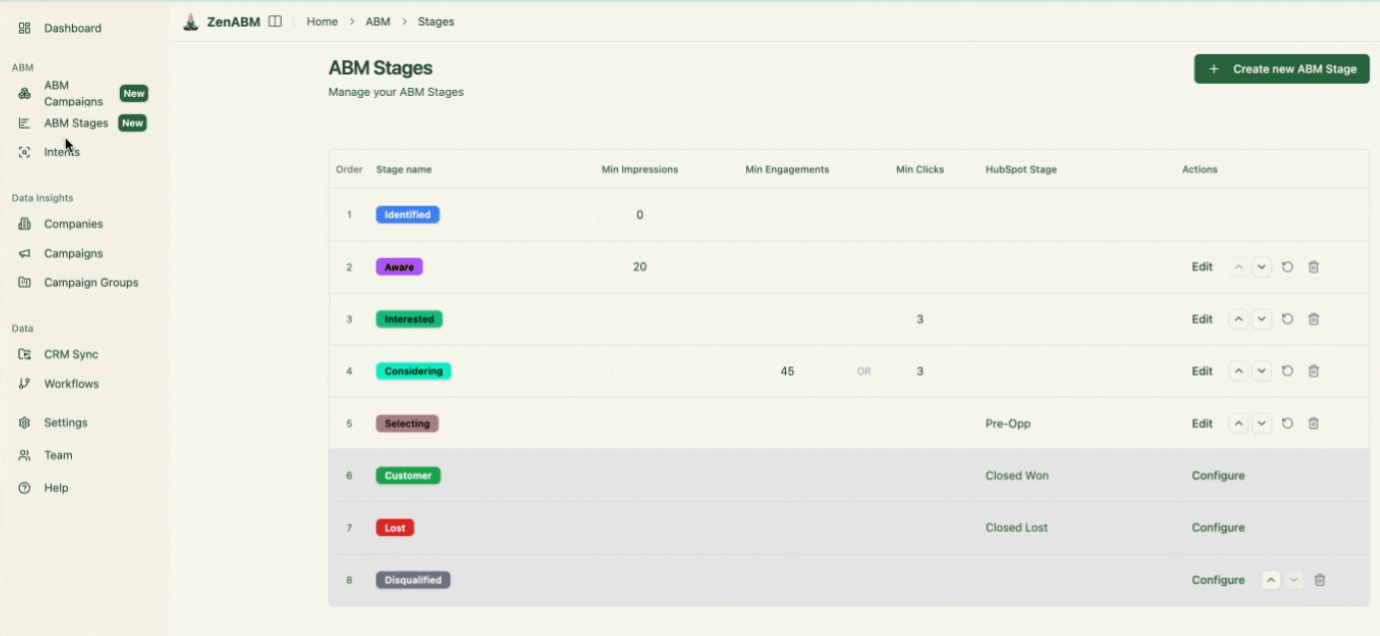
This gives you funnel visibility similar to larger suites, but powered by LinkedIn data.
CRM Integration and Workflows
ZenABM integrates bi-directionally with CRMs like HubSpot and adds Salesforce sync on higher tiers.
LinkedIn engagement data flows into the CRM as company-level properties:

Once an account crosses your score threshold, ZenABM updates the stage to Interested and automatically assigns a BDR.

Intent Tagging from Ad Engagement
ZenABM lets you derive intent topics from LinkedIn campaigns by tagging campaigns by feature, use case, or offer.
ZenABM then shows which accounts engage with which themes.
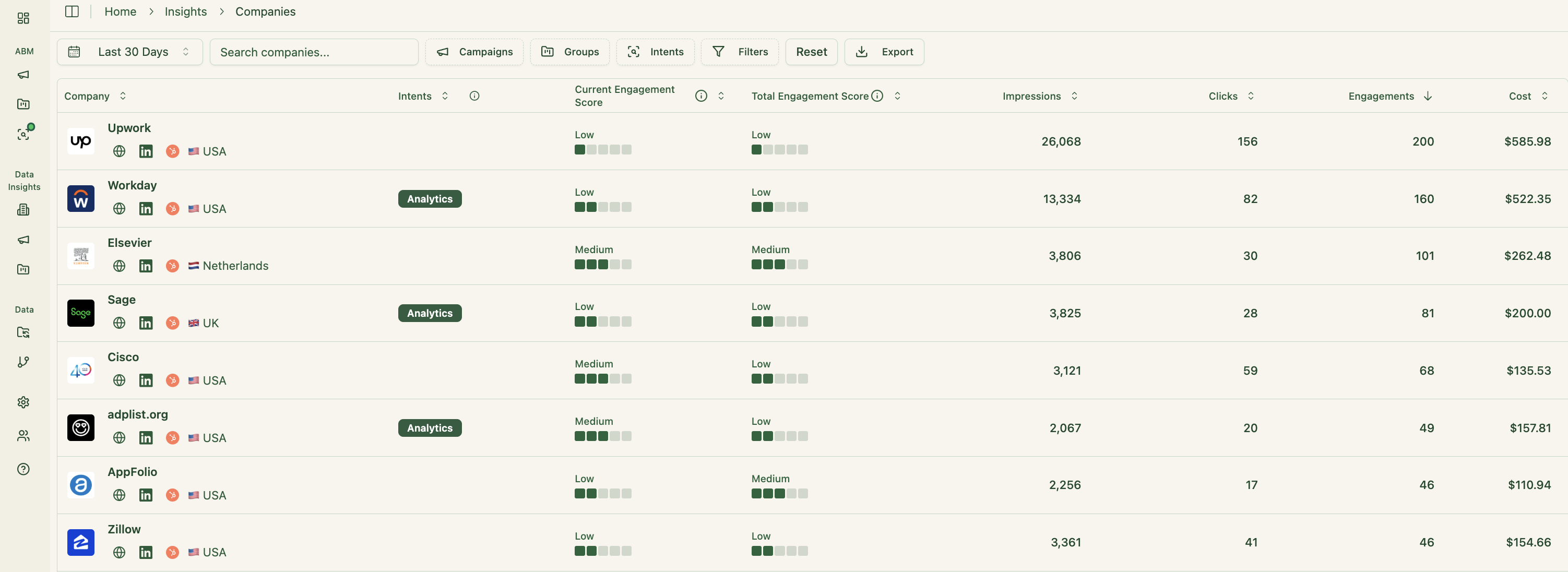
This is clean, first-party intent from owned interactions.
You can push these topics into your CRM so sales and marketing can tailor outreach to what each company has actually explored.
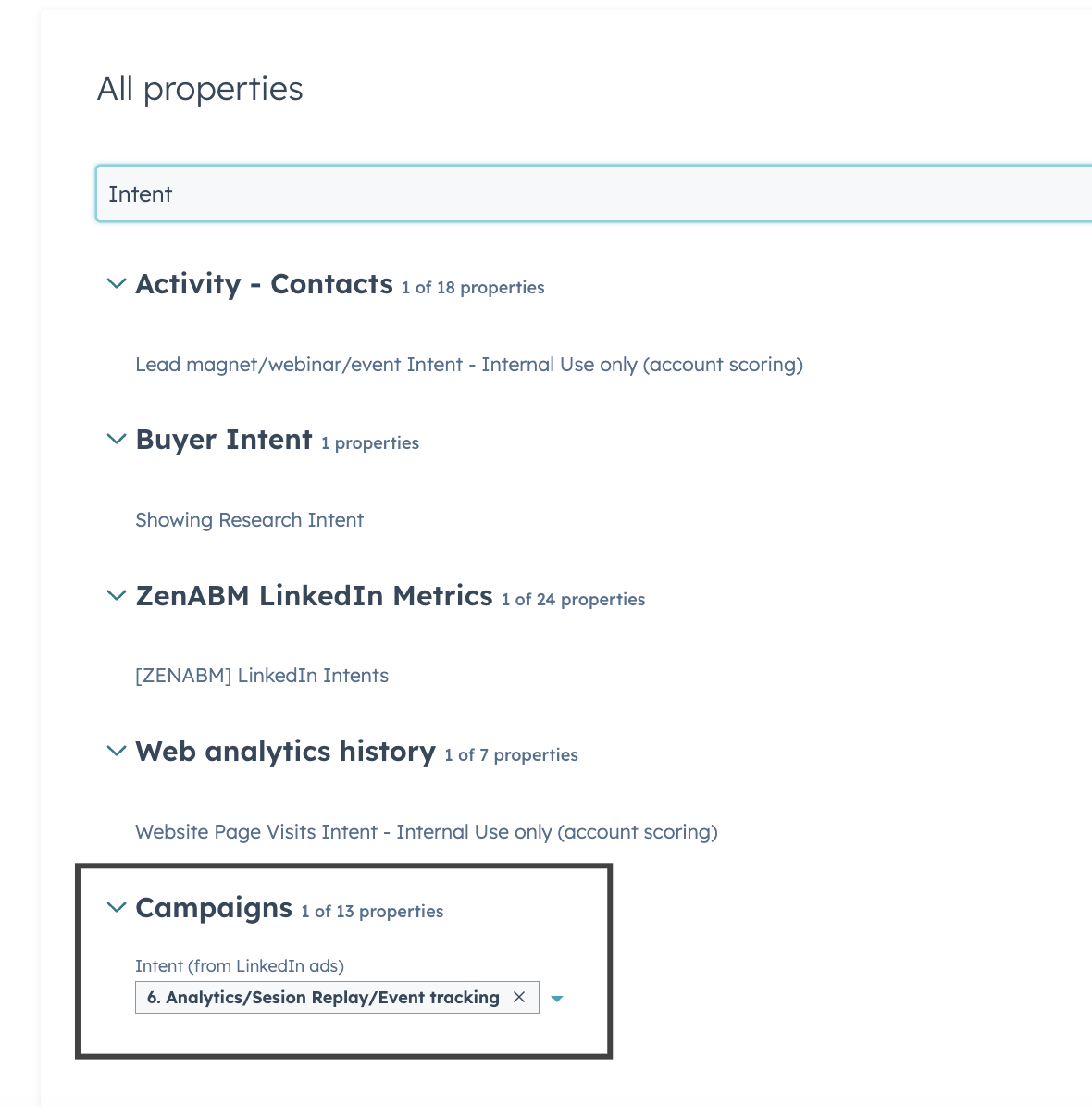
Built-in Dashboards and ABM Analytics
ZenABM ships with dashboards that connect LinkedIn ads to account engagement, stage movement, and revenue.
- You can monitor performance from high-level ABM campaigns down to LinkedIn campaign groups and individual ads:
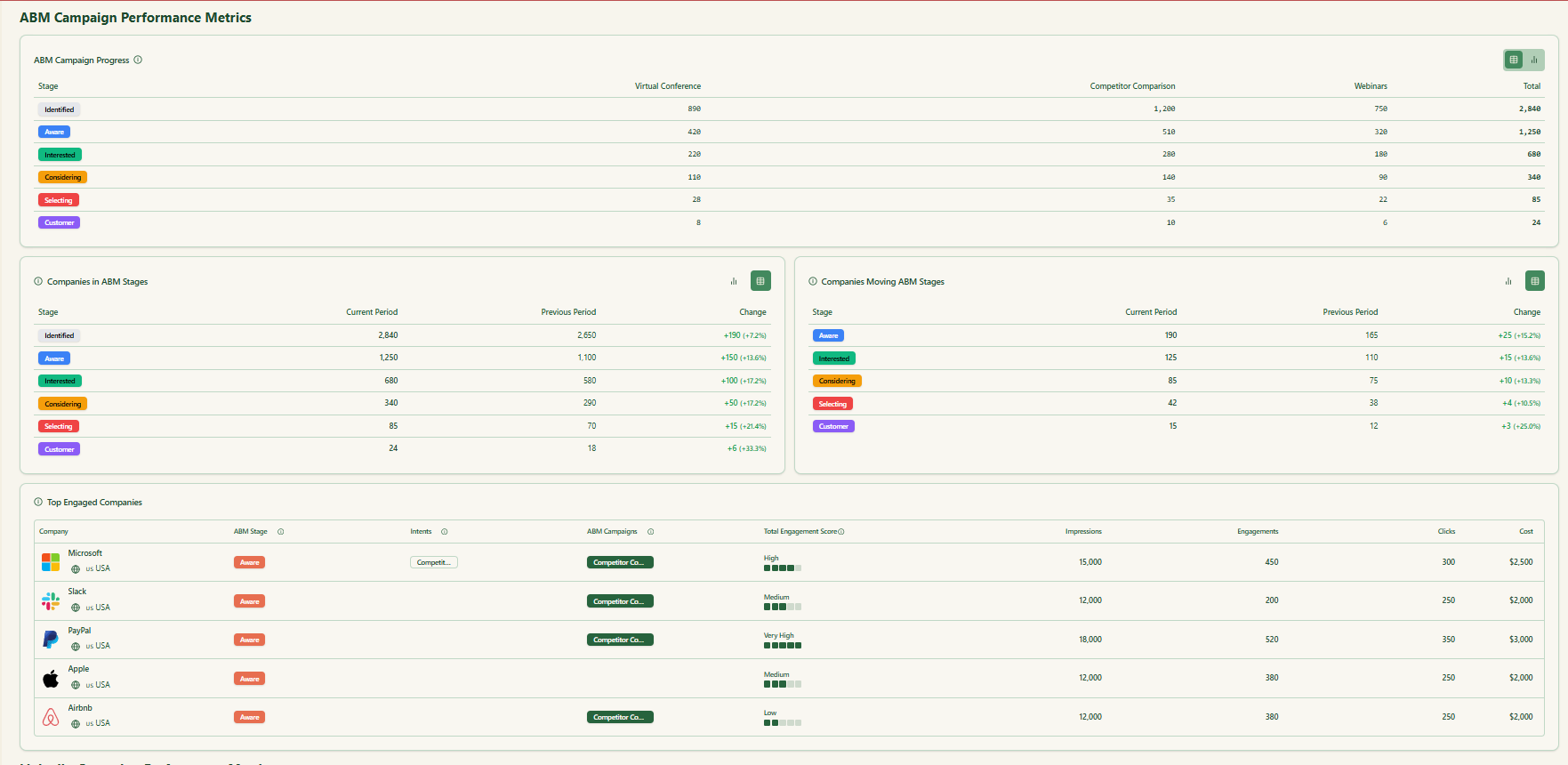

- Because ZenABM stores deal value and ad spend per company and per campaign, it can calculate ROAS, pipeline per dollar, and other revenue metrics and show pipeline contribution.

Custom Webhooks
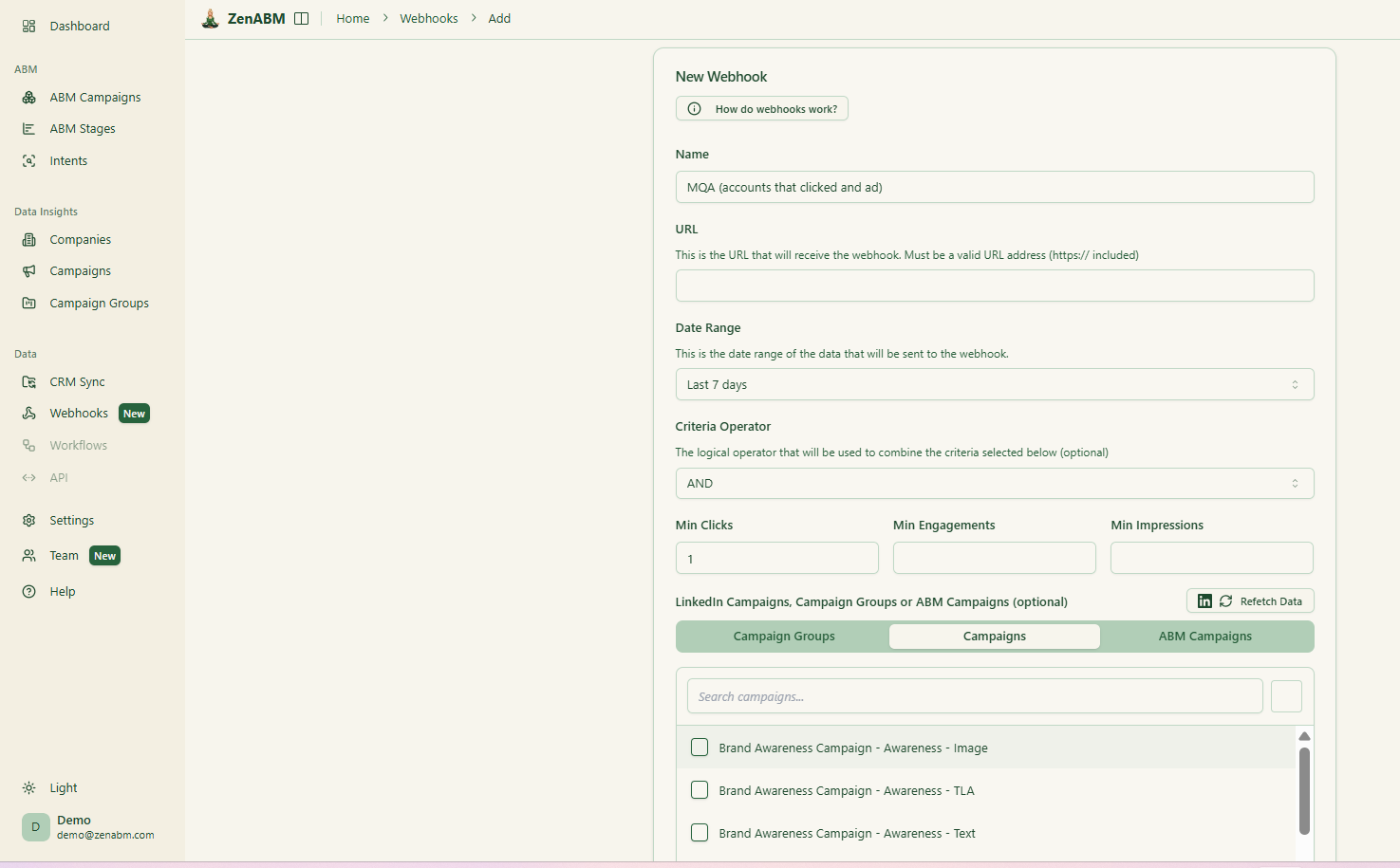
ZenABM’s custom webhooks let you push events into your stack, for example Slack alerts, enrichment flows, or other ops automations.
Job-Title Analytics
ZenABM shows which job titles engage with your creatives and gives dwell time and video funnel analytics.
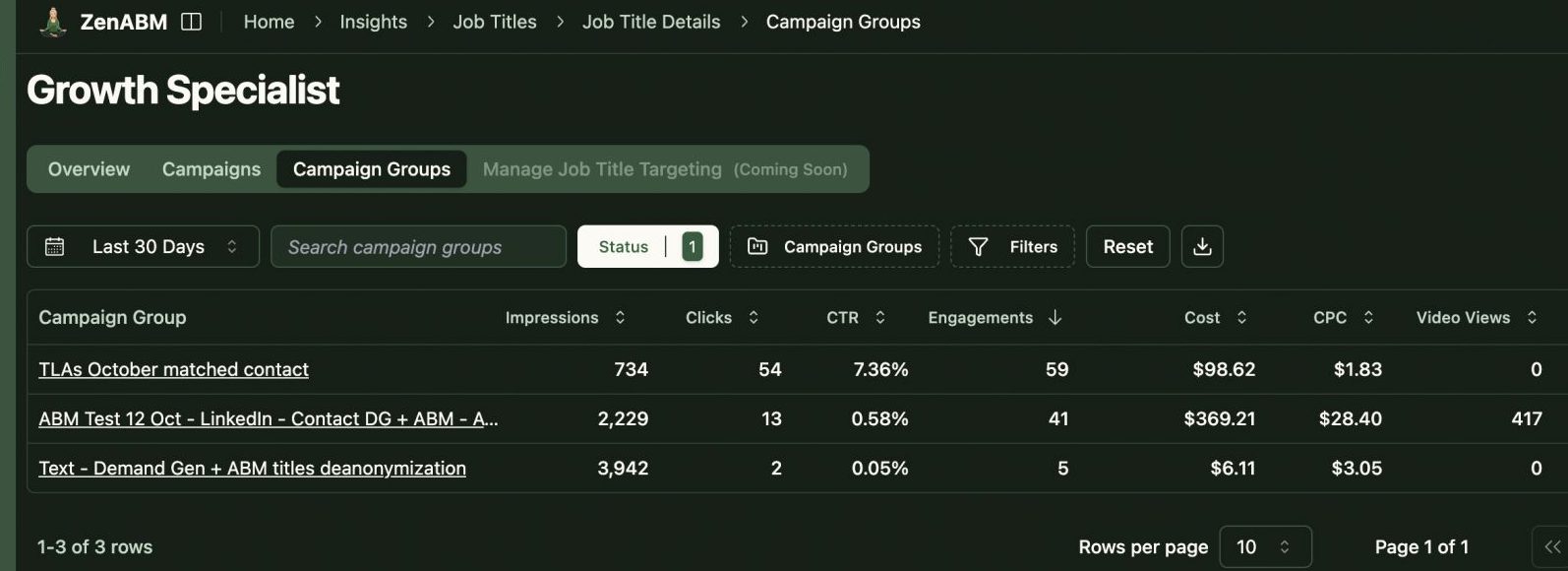
ABM Campaign Objects for True Multi-Campaign Attribution
Most tools treat each LinkedIn campaign separately. ZenABM lets you group several into one ABM campaign object so you can see performance across regions, personas, or creative clusters.
Instead of juggling fragmented reports in Campaign Manager, you see spend, pipeline, account movement, and ROAS for the entire initiative.
AI Chatbot to Analyze Your LinkedIn and ABM Data
ZenABM includes an AI chatbot on top of your LinkedIn API data and ABM model.
You can ask questions such as “Which accounts moved from Interested to Selecting last month?” or “What is my pipeline per dollar on retargeting?” and get answers based on live data.
Multi Client Workspace for Agencies
For agencies, ZenABM offers a multi-client workspace.
You can manage multiple ad accounts and clients in one environment, each with its own ABM strategy, dashboards, and reporting, instead of constantly switching accounts in Campaign Manager.
ZenABM Pricing

Plans start at $59 per month for Starter, $159 for Growth, $399 for Pro (with AI), and $479 for Agency.
The agency plan still stays under $6,000 per year.
All tiers include core LinkedIn ABM features. Higher tiers mostly increase limits and add Salesforce sync.
Plans are available monthly or annually, and every plan includes a 37-day free trial.
Conclusion
InsightSync makes the most sense when you need a central place to align marketing and sales around target accounts, engagement and competitor activity, and you are ready to pay a premium for that combined CI plus ABM analytics layer.
Linklo is attractive if your main goal is to squeeze better performance out of LinkedIn Ads with scheduling, pacing and account-level delivery controls, and you prefer a narrow but focused tool at a lower price point.
For LinkedIn heavy ABM teams that want company-level engagement data, first-party intent, ABM stages, CRM sync and revenue dashboards without enterprise pricing, ZenABM offers a leaner path. You can pair it with InsightSync or Linklo, or run it on its own if LinkedIn is the core of your ABM program.
Try ZenABM now for free (37-day free trial) or book a demo to know more!


